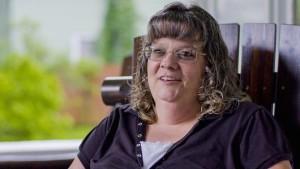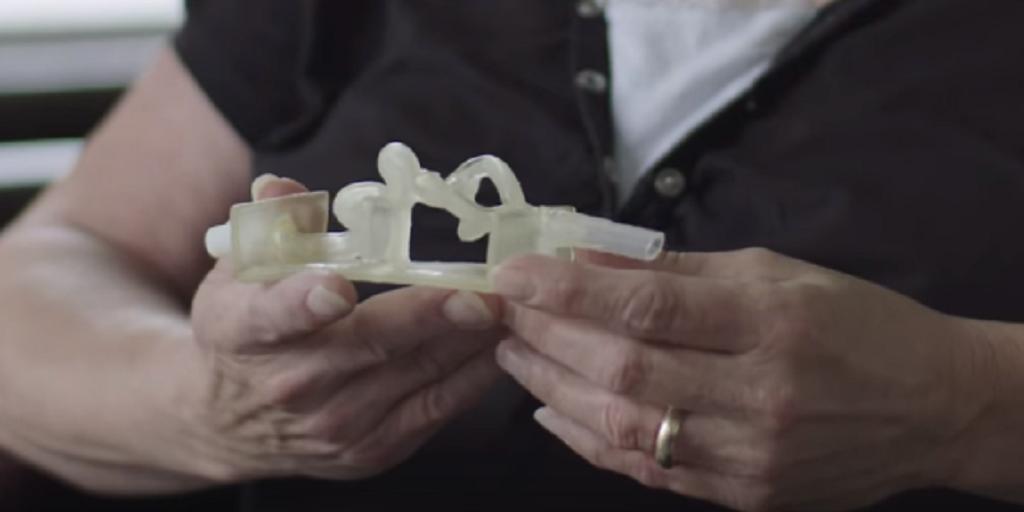
“Typical treatment options are highly risky, as no two cases are identical and require deep understanding of each patient’s unique vascular anatomy,” said Scott Radar, General Manager of Medical Solutions at Stratasys. “With the aid of Stratasys’ PolyJet 3D Printing Solutions, surgeons at some of the world’s leading hospitals are now able to quickly pinpoint affected areas on individual patients and practice surgeries on realistic anatomical 3D printed models. This is expected to dramatically minimize risks associated with delays and complications stemming from real-time, in-procedure diagnoses.”
The model of Flint’s brain was created by researchers at the Jacobs Institute, who used the images of her CT scans to print a life-sized replica using Stratasys’ TangoPlus material, a flexible photopolymer that mimics not only the look but the feel of human tissue and its vascular structure. With the realistic replica of the aneurysm in front of them, the surgeons were able to test several surgical procedures, which, they discovered, could have been fatal if performed on the patient.
“Our original plan was to treat her aneurysm with a metallic basket – delivered into the area with a tiny tube,” said Dr. Adnan H. Siddiqui, Chief Medical Officer at The Jacobs Institute and Director of Neurosurgical Stroke Services for Kaleida Health. “After attempting the procedure on the 3D printed replica, we realized it just wasn’t going to work. “Based on the Stratasys 3D printed model, our team was able to pre-empt potential complications and devise a much more optimal means of treating Teresa’s aneurysm.”
Once that optimal procedure was decided on, the surgeons replicated it inside Flint’s brain in a procedure that took about 45 minutes as opposed to three or four hours, which Dr. Siddiqi estimates would have been the length of the surgery without the prior preparation. The quicker surgery greatly reduced the chances of death or stroke, which, according to Dr. Siddiqui, is about a five to ten percent chance in most aneurysm surgeries.
If you’re even a casual reader of 3DPrint.com, you’ll probably have noticed that there have been a lot of stories like Teresa Flint’s lately. 3D printed models of patients’ organs and their afflictions have saved an incredible amount of lives as the technology has been adopted by more and more hospitals. As 3D printing becomes more sophisticated, it’s being used for increasingly complex and delicate procedures. A brain aneurysm is about as delicate as it gets, but they’ve recently made their way onto the list of conditions that can be successfully treated thanks to printed models.
“By 3D printing models that mimic vascular feel, we can create an approach I don’t think is achievable any other way,” said Michael Springer, Director of Operations and Entrepreneurship at The Jacobs Institute.
With only a few days to go until Thanksgiving, Teresa Flint and her three children will certainly have a lot to be thankful for this year. Let’s hear your thoughts on yet another incredible 3D printed medical application in the 3D Printed Brain Aneurysm forum thread on 3DPB.com.
https://youtu.be/SKAbkEXD_Wk
